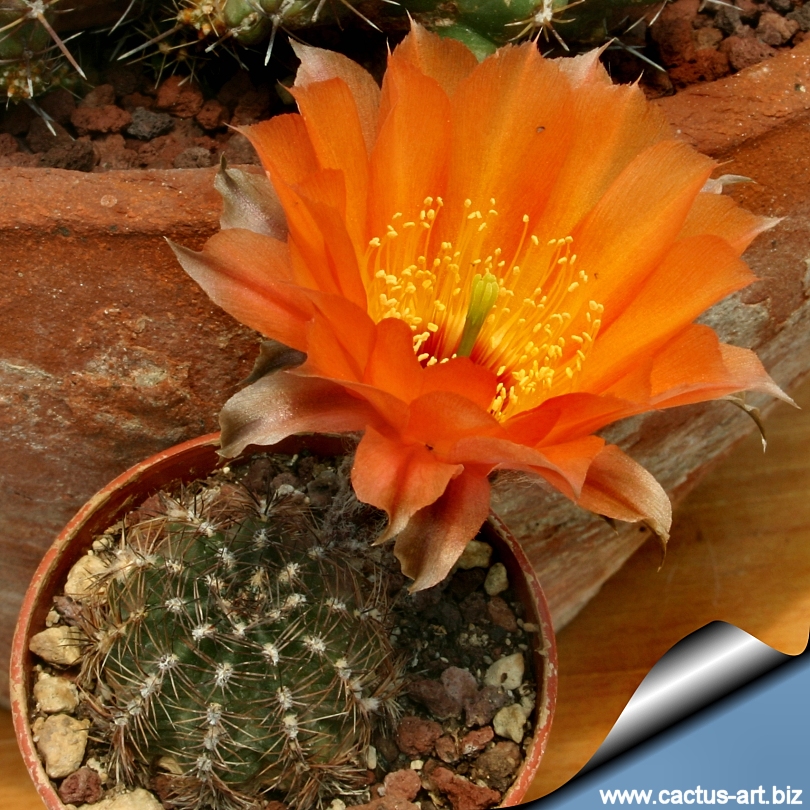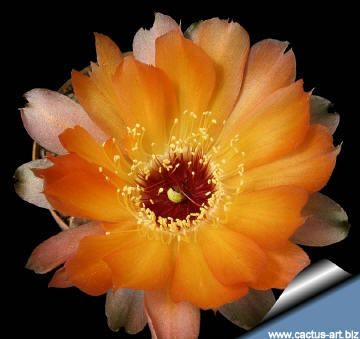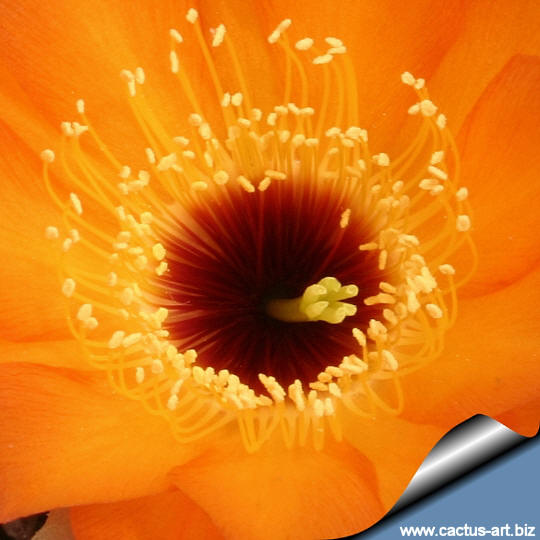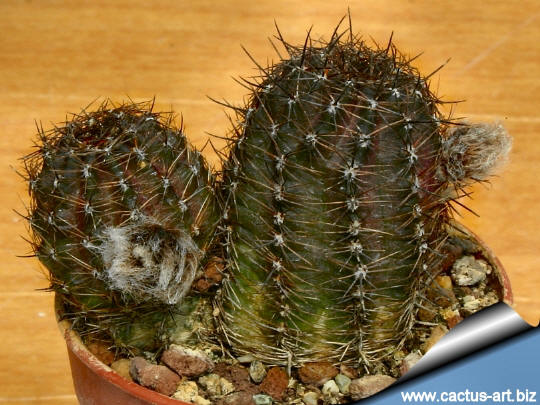|
|
|

Lobivia amblayensis.
The flowers is a unique bright orange colour with a nice mellow shade!
It is impossible to adequately describe it.
A real eye catcher!
|
 |
Description:
Compact small clustering cactus.
Stem: Black-green with woolly areoles.
Spines: Short, whitish-cream to almost black. thin and spreding.
Flowers: Approx. 5.5 cm. long, 4.5 cm in diameter
vary from orange to red with an orange, red or green stigma.
Blooming season (Europe): Flowers are produced in spring and remain open
for about three or four days.
Root: tap root.
|
|
Photo of plants belonging to the Lobivia
(Echinopsis) haematantha
complex
(This taxon has lots of synonyms (like most Lobivia) whit several
controversial varieties and subspecies):
|
|


Advertising
|
|
|
|
|
Family:
Cactaceae (Cactus
Family) |
|
Scientific name:
Lobivia amblayensis
Rausch 1972
Origin:
Amblayo, Salta, Argentina 2800-3600m
Conservation status: Listed in
CITES appendix 2.
|
Synonyms:
-
Echinocactus
haematanthus Speg. 1905
-
Lobivia haematantha
(Speg.) Britton & Rose 1922
-
Lobivia amblayensis
Rausch 1972
-
Echinopsis amblayensis
(Rausch) H.Friedrich 1974
-
Echinopsis densispina
var. amblayensis (Rausch) J.G.Lambert 1998
|
|
|
|

Superb nice plants with impressive flowers colour.
|
|
§
The body is black-green with woolly areoles.
Cultivation: It
is a summer grower species that
offers no cultivation difficulties. Water regularly in
summer (but do not overwater ) needs good drainage and very porous,
keep rather dry in winter.
Feed with a high potassium
fertilizer in summer.
It is quite frost resistant if kept dry (hardy to -5° C)
Outside full sun or afternoon shade, inside needs bright light, and some
direct sun.
Propagation: Direct sow after last frost.
(seldom produces offsets)
|
|